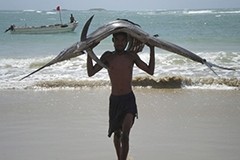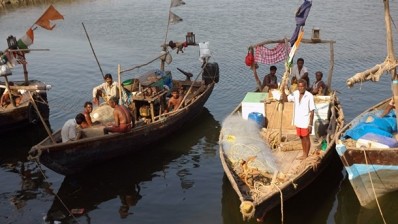Rising fish prices hurting India’s marine industry, says industry body

India's appetite for fish has reached new heights thanks to a combination of rising per-capita incomes, rapid urbanisation and ever-evolving eating patterns.
“Wholesale inland fish prices rose by a whopping 200% and marine fish prices rose by about 91% from 2008-09 to 2012-13,” said DS Rawat, National Secretary General of Assocham.
However, this growing demand is fast leading to depletion and over-exploitation of fish stocks in the country. Growth of fish production declined to half from about 7% in 2008-09 to just about 3.5% during 2012-13.
The index value of fish, which is the normalized average of prices for fish during a given interval of time and indicates its trading value as a commodity, was just over 126 during 2008-09 but rose past 291 as of 2012-13 with high wastage and spoilage of fisheries. This was due to a combination of factors like falling fish catch, lack of organised retail, an ailing distribution system, post-harvest losses and rising fuel costs.
Business of fishing fast becoming unviable
“Rising fish prices have made the business financially unviable for the fishing community and all stakeholders, traders, processors and others involved in fishing-related ancillary operations,” said Rawat.
“Growing urbanisation and the advent of supermarkets has lead to the growth in fish consumption across India, but a lack of poor post-harvesting equipment, inadequate food processing technology and storage facilities is bleeding the fishing industry, and thereby significantly hampering its growth prospects,” he added.
Poor handling and processing of the catch, inadequate packaging and storage facilities, clubbed with marketing malpractices, are leading to a wastage of about 25% of total fisheries resources, thereby causing a staggering US$2.5bn in annual losses to India's US$10bn marine and fish industry, said Assocham.
The apex body also highlighted that India's traditional fishing communities are over-exploiting coastal waters, thereby leading to fast depletion of marine resources and shrinking catches, while a dearth of suitable fishing vessels means that fish stocks in India’s territorial deep-sea waters remain untapped at the same time.
Fix it before its too late
In its analysis, Assocham has advocated eco-friendly and sustainable practices of fisheries resources, establishing cold storage facilities and a need to bring in regulations to curb over-exploitation in marine habitat.
One of the measures the body has suggested is of developing technology for value addition and infrastructure for fish production based on a public-private partnership model.
It has also called for intensifying methods to enhance production and the modernisation of fish markets across the country by setting up refrigerated storage facilities together with transport and logistics support in marketing centres.
According to Assocham, the industry also needs to go through a process of re-engineering to be able to meet the growing needs of the domestic market for processed, packed and canned fish.
“More investment should be made in value-added fish and marine products in ready-to-eat and ready-to-serve categories - more so as the growing domestic market also offers opportunities for such products in the fast-growing retail sector,” concluded Rawat.













